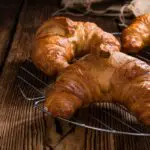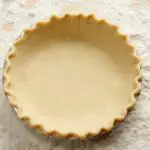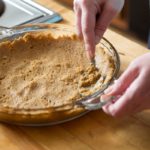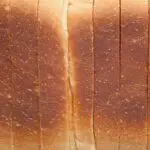Puff pastry is a classic French pastry dough that has become very popular around the globe. In fact, it was even featured in the movie Ratatouille.
Puff pastry is also known for its versatility, being able to be baked or fried.
The term “puff pastry” refers to two types of dough: sweet and savory. Sweet puff pastry consists of butter, flour, sugar, eggs, milk, yeast, salt, and water.
Savory puff pastry contains bacon fat, beef stock, cream cheese, onions, garlic, herbs, and spices.
Can You Use Classic Puff Pastry For Pie Crusts?
Yes! In fact, both puff pastry and other pie dough can be used for pie crusts. It just depends on what you want the final pie to be like.
Double crust pies may benefit from homemade puff pastry dough, to make a gorgeous pie crust with an even more delicious pie filling.
Phyllio dough and laminated dough are some doughs that are also different from puff pastry dough, each dough does something different to your overall crust pie.
And you want your single crust pie to be delicious! Pie crusts provide layers of dough and can be baked at oven temperature.
What Is Puff Style Pastry?
A puff pastry is actually a specific type of yeast dough where the butter is firstly layered in the dough itself, creating a few layers of alternate butter and dough.
This makes the dough light and fluffy. When baked, it gets puffed up like a balloon.
The word “puff” refers to the air pockets inside the dough. In France, the term “pâte feuilletée” describes a similar dough.
Pie weights may be beneficial for this type of pie crust, especially compared to using store-bought pie crust.
Puff pastry pie crusts can be used for some of the most classic fillings, such as apple pie and pumpkin pie, and that golden brown flaky pastry just cannot be beaten. Anything to make your pie dish easier, right?
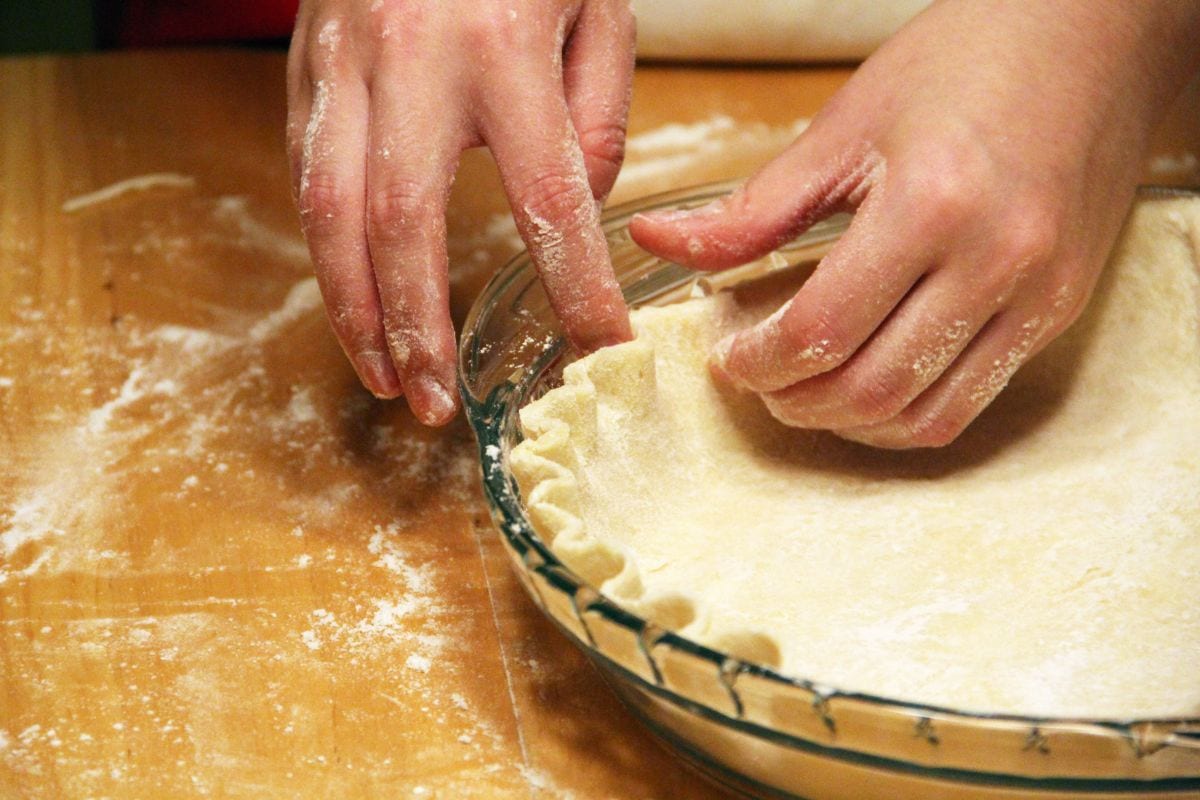
What Are The Main Differences Between Puff Pastry Dough And Pie Dough?
Pie dough alone is roughly thicker and much sturdier, providing a more solid bite and foundation to hold pie fillers. Pie crusts are usually baked in a pan, making the
m more buttery and flaky than puff pastry, which tends to be rolled out into thin sheets. Both types of pastry can be used to make pies. But there are differences between the two.
The texture of pie dough can vary greatly depending on how it is prepared. Some recipes call for rolling the dough out to about ¼ inch thick, while others require a slightly thinner layer.
When baking, pie dough needs to be cooked longer than puff pastry because the bottom layers are thicker and bake more slowly. For most people, a 12-inch deep dish pie requires three hours of cooking.
Taste Difference
Pie crust and puff pastry both use flour, water, salt, and fat. But there are some key differences in how they are prepared. For example, pie crust is usually baked while puff pastry is cooked under pressure.
This makes one version crisper than the other. Both pies and pastries contain eggs, milk or cream, butter, sugar, and yeast. They differ in the way they are mixed together and what type of leavening agent is used.
Even the type of butter you use makes a difference to the pie crust, salted butter and cold unsalted butter are going to have taste differences. So pay attention to your pie recipe to get that golden brown finish,
Texture Difference
Pie crust has a much ‘shorter’ texture than a puff pastry because it doesn’t contain as many layers. This makes it easier to roll out and bake into a pie shell. A puff pastry contains a lot of layers, making it thicker and tougher.
If you want to make a pie crust, you’ll want to use shortening or butter for the fat. You can use lard for the flavor, but it won’t work well for rolling out dough.
When it comes to puff pastry, the texture is going to be crisp. It’s going to be flakier, and it’s going to feel like a thin layer of cookie dough. To achieve this, you’re going to want to use very cold ingredients and keep everything chilled.
Once you start working with the dough, don’t let it warm up too much. Also, once you start rolling out the dough, continue rolling it out until it reaches about ¼ inch thick.
Now, a flaky texture is what you’re going to want to aim for, with a bottom crust that can hold pie fillings and maintain multiple flaky layers.
How Do You Use Puff Pastry?
Puff pastry is one of those things that people either love or hate. If you are like us, we are huge fans. We love how versatile it is and how easy it is to make something delicious.
But there are some pitfalls to watch out for, especially when making puff pastry ahead of time.
The key to successful puff pastry is layering the butter into the dough. This helps keep the layers intact during baking. You don’t want to overwork the dough because it will become tough and dry.
And you don’t want to underwork it because then the butter won’t melt properly. So, always start with a cool oven and let the dough rest for about 15 minutes before rolling it out.
Once rolled out, cover the sheet of dough with plastic wrap and place it in the fridge for 30 minutes. This gives the pastry time to relax and firm up again, preventing it from becoming too soft.
Then, take the sheet of dough out of the fridge and allow it to come to room temperature. Once thawed, roll it out again and repeat the process.
We usually try to bake our puff pastry immediately after making it, but if you’re pressed for time, you can freeze it.
Just tightly wrap the sheet of dough in foil and put it in a ziplock bag. Freeze it overnight and defrost it in the refrigerator the next day.
What’s The Best Temperature For Puff Pastry?
The best temperature for baking puff pastry is between 180 – 200 degrees Celsius. This is because it gives the pastry a flaky texture. As well as using a standard baking sheet to support that bottom crust.
The temperature is what can make a good pie crust recipe, with flaky layers, and a top crust that is the perfect combination of shortcrust pastry with beautifully baked pie fillings.
Aluminum foil may be useful to control the baking stages with an increased temperature, as well as making sure you have thin layers using your rolling pin to achieve the best pot pies.
Store-bought puff pastry isn’t a bad idea either.
Final Thoughts
If you’ve never made puff pastry before, you may not know exactly what you should expect. But, after reading through this article, you should have a better idea of what to expect.
Hopefully, you now understand why puff pastry is so popular and can confidently whip up a batch at home.

